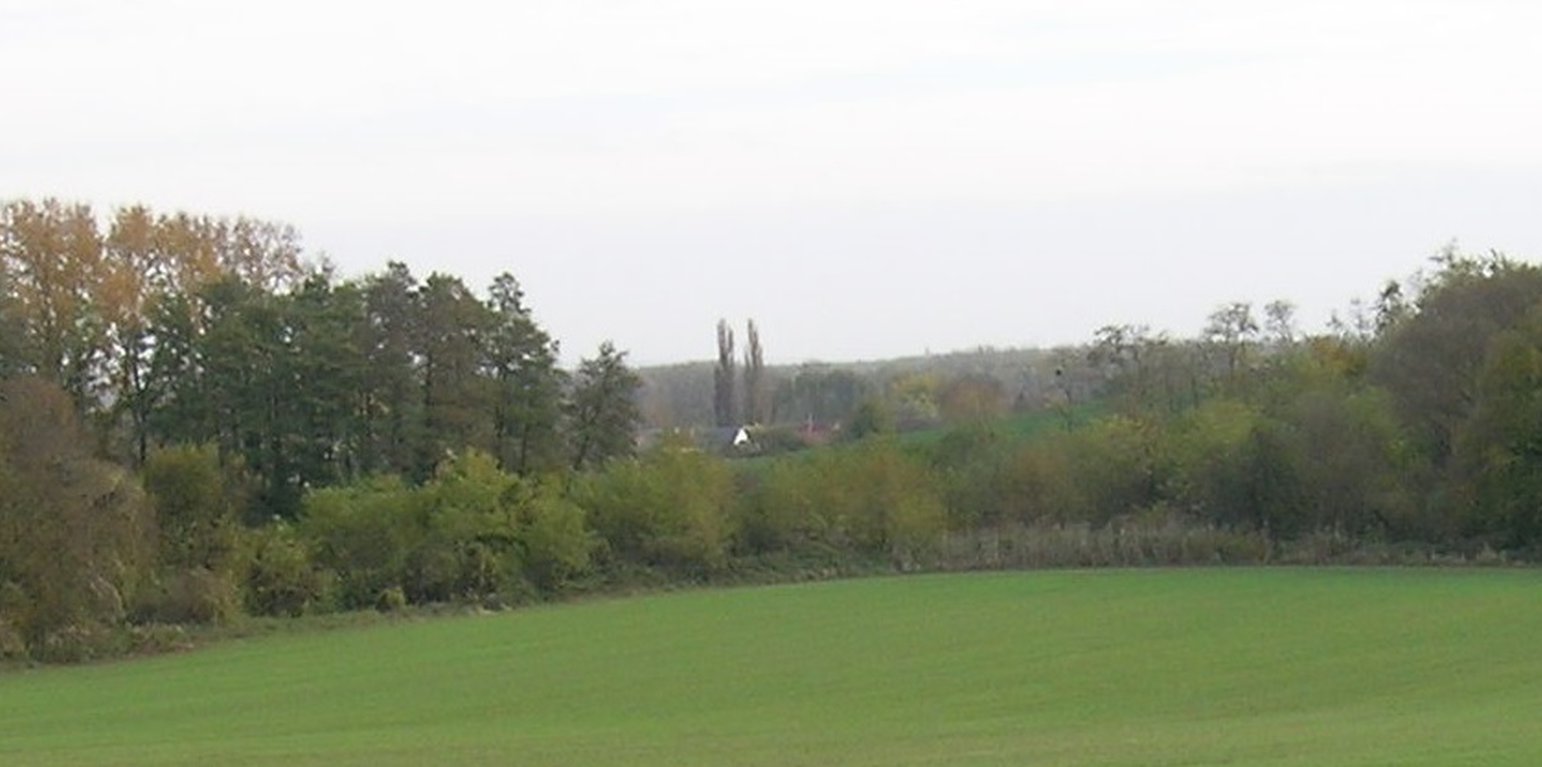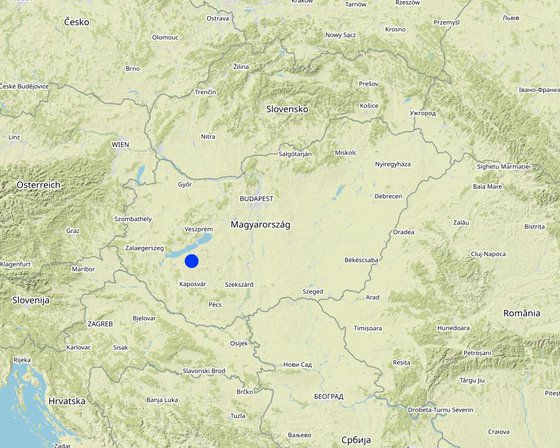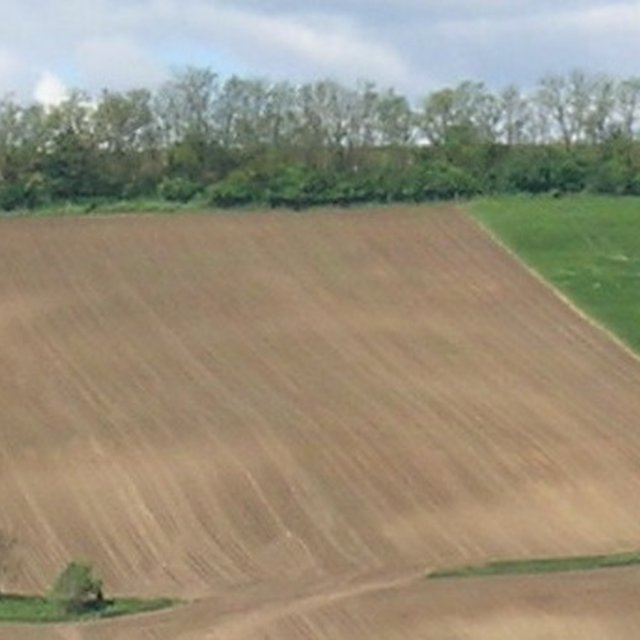



Buffer strips and hedges comprise natural vegetation of grass, bushes and trees. They are sited at the edges of fields, roads and surface water bodies. Their main function is to provide a permanent natural buffer to intercept and control nutrient and sediment transport from agricultural fields, by slowing surface runoff and thus promoting infiltration. Creating such green corridors is ecologically advantageous as well.
Leaving field margins, headlands or strips around and between fields results in the natural germination and establishment of vegetation. Alternatively, buffer strips and hedges can be established deliberately according to a planting plan - which includes the species to be planted, their location and dimensions.
However, land users usually prefer to cultivate the possible largest areas, so they do not like leaving wide strips of “abandoned” land. In addition buffer strips and hedges provide habitats for wildlife – and this often results in damage to field crops by wild animals.
According to Hungarian forestry legislation, a strip of trees wider than 20 metres and larger than 0.5 hectare in total area is considered to be a forest, so in this case strict regulations have to be complied with. Below these threshold values land users have more liberty to do what they wish. When arable fields are close to, or surrounded by, afforested areas, conflict often arises between hunters and farmers, due to the damage caused by wild animals and hunters who cross farmers' fields – creating tracks and compacting the soil.

Lieu: The case study area is situated within the Balaton Catchment Area in the western Hungary. The climate is moderately warm, moderately humid, the number of sunshine hours per year are high. Mean annual temperature of the region of the Lake Balaton is about 10 ˚C. The average amount of rainfall (600-700 mm / year) nationally means a medium rainfall zone. The Balaton Catchment area is 5765 km2. The main environmental purpose is to reduce pollutant (phosphorus and other plant nutrients) loads of Lake Balaton, where anthropogenic eutrophication is the main issue of environmental concern. Lake Balaton, with its nearly 600 sqkm area, is the largest shallow lake in Middle Europe. The lake as well as the surrounding area form very important natural (ecological, water and landscape) resources and are one of the major target areas of water related recreational tourism in Europe as a whole. 37% of the total catchment area is arable land which is much lower than the national average, 27% is forest, which exceeds the national average. 15% of the land suitable for grassland management, 5% is horticulture, 3% is pomiculture, 2% is viticulture, 1% is reed management and fish farming. The „Kis-Balaton” nature conservation area situated within the Balaton Catchment area. The „Kis-Balaton” wetland is under protection of the Ramsar Convention habitat., Somogy, Hongrie
Nbr de sites de la Technologie analysés: 2-10 sites
Diffusion de la Technologie: appliquée en des points spécifiques ou concentrée sur une petite surface
Dans des zones protégées en permanence ?: Non
Date de mise en oeuvre: il y a plus de 50 ans (technologie traditionnelle)
Type d'introduction




| Spécifiez les intrants | Unité | Quantité | Coûts par unité (dollars américains) | Coût total par intrant (dollars américains) | % des coût supporté par les exploitants des terres |
| Main d'œuvre | |||||
| Soil preparation | person day | 2,0 | 50,0 | 100,0 | 100,0 |
| Planting | person day | 3,0 | 50,0 | 150,0 | 100,0 |
| Equipements | |||||
| Soil preparation | hiring cost/day | 1,0 | 400,0 | 400,0 | 100,0 |
| Planting | hiring cost/day | 1,0 | 100,0 | 100,0 | 100,0 |
| Matériel végétal | |||||
| Seedlings (for planting one hectare) | piece | 4000,0 | 0,1 | 400,0 | 100,0 |
| Coût total de mise en place de la Technologie | 1'150.0 | ||||
| Coût total de mise en place de la Technologie en dollars américains (USD) | 1'150.0 | ||||
| Spécifiez les intrants | Unité | Quantité | Coûts par unité (dollars américains) | Coût total par intrant (dollars américains) | % des coût supporté par les exploitants des terres |
| Main d'œuvre | |||||
| Pruning | person-day | 1,0 | 50,0 | 50,0 | 100,0 |
| Mechanical weeding | person-day | 1,0 | 50,0 | 50,0 | 100,0 |
| Equipements | |||||
| Tillage/mechanical weeding machine | hiring cost/day | 1,0 | 200,0 | 200,0 | 100,0 |
| Coût total d'entretien de la Technologie | 300.0 | ||||
| Coût total d'entretien de la Technologie en dollars américains (USD) | 300.0 | ||||
Vegetation within buffer strips slows the speed of runoff, allowing sediments to be deposited into the buffer strip area
Vegetated margins around agricultural fields provide important refuge and food for invertebrates, mammals and birds
Since the soil under vegetated strips is undisturbed carbon storage increases there.
In drought conditions, the risk of fire increases significantly in dry scrub areas
Buffer strips have a wind-blocking effect if they are high enough
Buffer strips are effective filters of the transported sediments, less soluble pesticides and fertilizers.